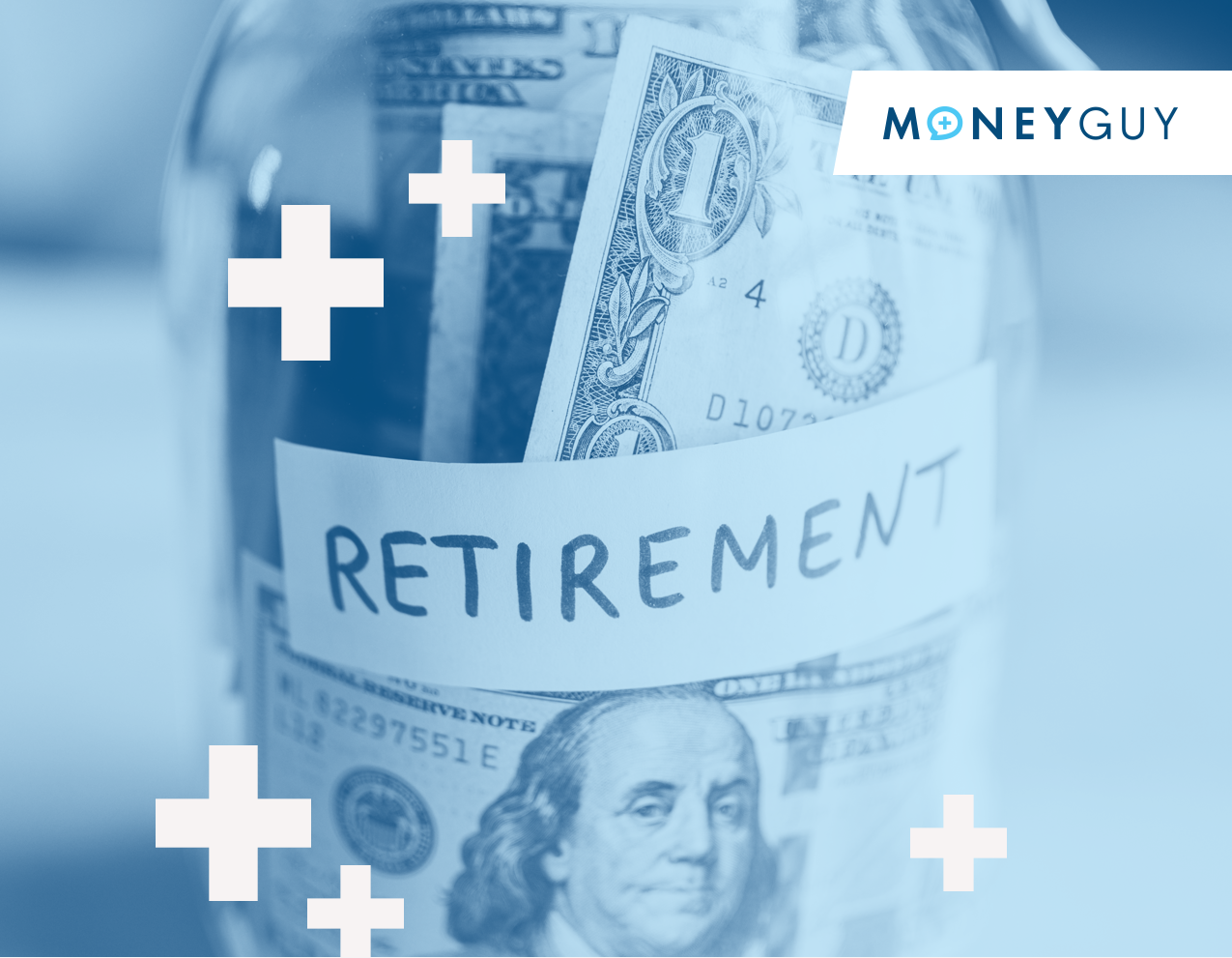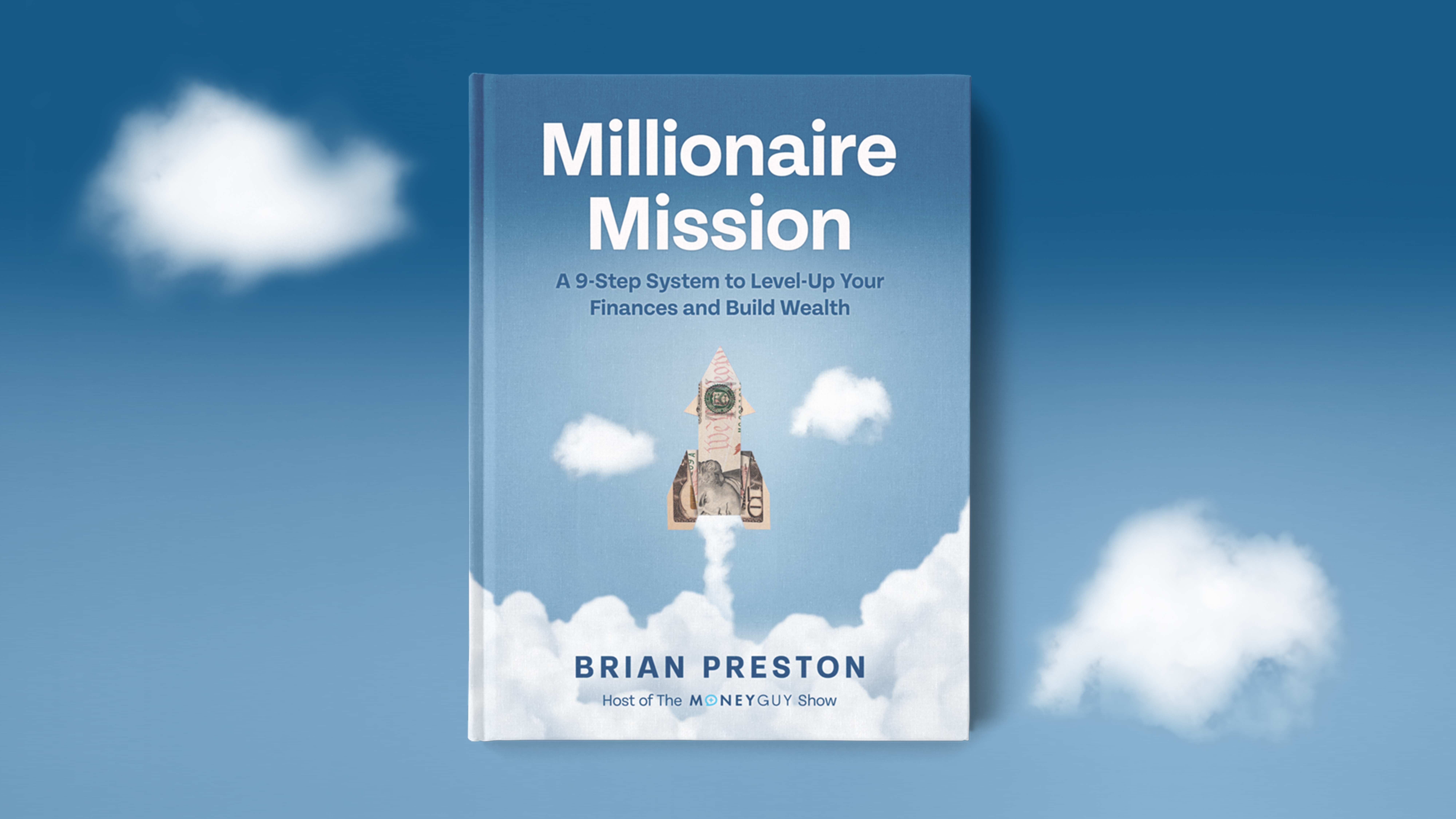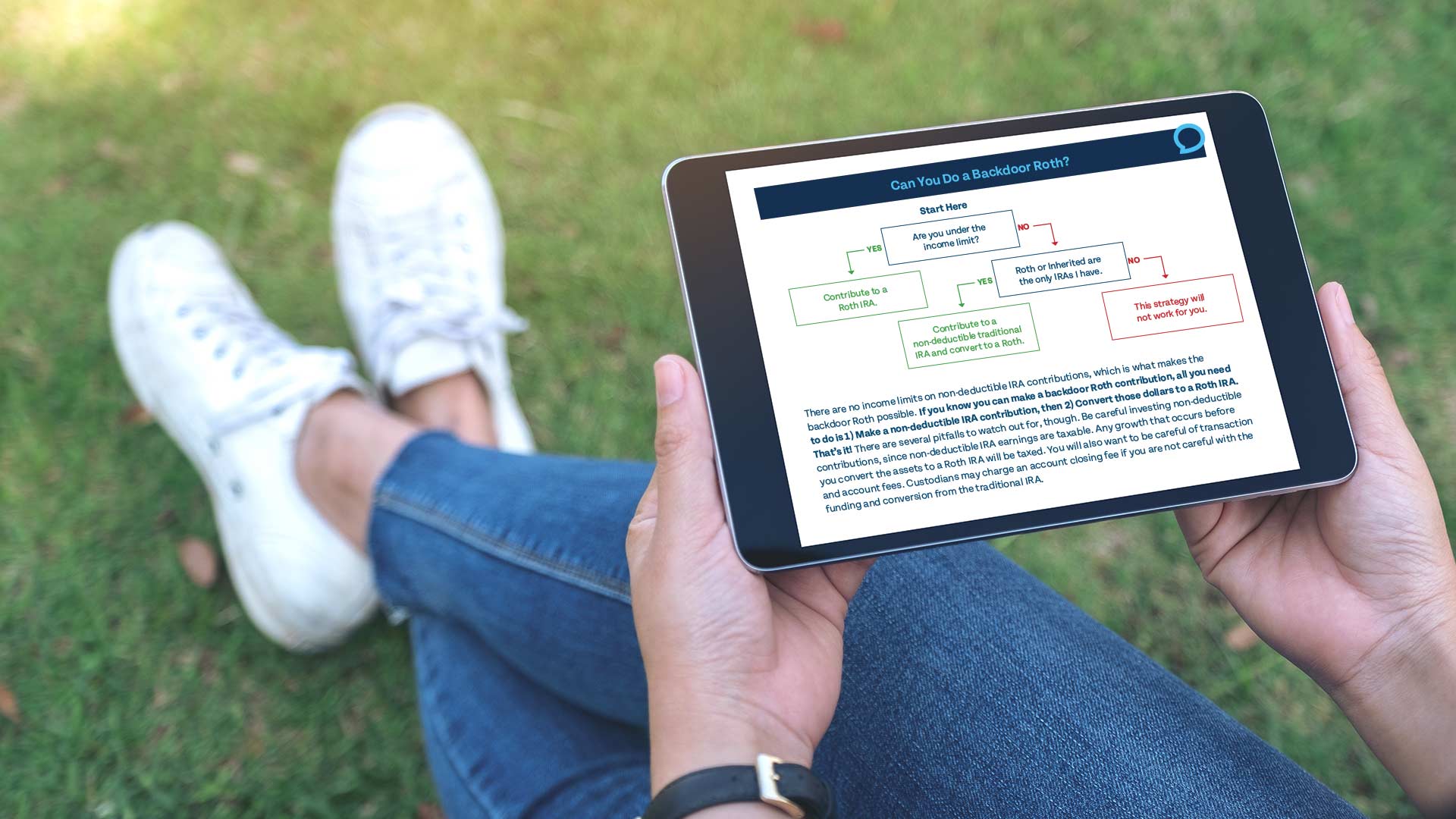
Change your life by
managing your money better.
Subscribe to our free weekly newsletter by entering your email address below.

Subscribe to our free weekly newsletter by entering your email address below.
The IRS just announced they are delaying a change to 401(k) contributions to 2026. Here’s what changes are going into effect, what’s getting delayed, and what you need to know.
Subscribe on these platforms or wherever you listen to podcasts! Turn on notifications to keep up with our new content, including:
401ks, so when there’s a change, we gotta load you up. Brian, I am excited about this one because, like you said, things they are a change, and even some of the things that are changing are now changing from the way that they changed the last time that they changed. And what we want to be able to do is make sure that you guys can keep it all straight, so you know what to expect when it comes to this amazing wealth-building tool at your disposal. Yeah, our favorite taxing Uncle, Uncle Sam, you know he heard what the legislators said, and he’s like, ‘Wait a minute, guys, have y’all really thought about this?’ Look, let’s hit the pause button on a few things. So that’s why we just want to load you up.
But I think it’s first the—I want to set some context here. In this crazy world we live in now, there are so many influencers and TikTokers. I mean, we’ve actually created our own little genre of TikTok reacts and other things off of this. I wanted to give people the understanding of why we actually do like 401ks. Yeah, we love 401ks, and there are a number of reasons why. The first of which are the tax benefits. You’ve heard us say this a thousand times: 401ks are employer-sponsored retirement plans and are one of the very best ways to legally hide money from the government. You can either hide money from the government now this year with present tax benefits, or you can hide money from the government in future years with Roth benefits. 401ks are an amazing mechanism to allow you to let your dollars work in an incredibly tax-efficient manner.
Okay, let me tell you about my favorite tax benefit out there. Exactly, not a taxpayer? It’s free money, guys. Who in the world doesn’t like free money from your employers? I mean, talking about a guaranteed 50 to 100 rate of return, that is what 401ks can do. And then on top of that, the forced discipline. You know, I just had a conversation, Bo, where we were talking, and I was like a lot of people, I feel like, whether it’s money-saving habits, whether it’s relationships, when you feel like you can let your behavior make you pull out of something even before it gets good, you miss out on the best part. So if you have a ride-or-die type mentality, 401Ks, since you can’t touch them until you hit retirement age and they also require you to have contributions to get the employer match, that forced discipline is very powerful.
And then the last thing is that there have been a number of studies that have found that most millionaires actually hit their millionaire status through their employer-sponsored plan. So the first account that actually crosses over that million-dollar mark or at least a large portion of it exists in that employer-sponsored 401k. So people that are successful, people that have built wealth, they use this tool. So why on Earth would you not want to use the tool as well? Now, fortunately, none of this great stuff is changing. It’s all stainless. I mean, so let’s nerd out a little bit; let’s go a little bit deeper because this is the part where like I said, our favorite taxing uncle is like, guys, we’ve got enough feedback, we can’t do everything that the legislation kind of laid out for. But let’s walk through, go ahead and share with them what did the legislators want to do and what did Uncle push back on?
Yeah, so for those of you who don’t remember, Secure 2.0 was passed in December of 2022. One of the provisions that a lot of people talked about, that a lot of people were clueing into, is that for folks that were 50 or older or maybe folks that happen to be turning 50 in any specific given year, guilty as charged, earned over $145,000 or more in the preceding year would be required to make their catch-up contributions on a Roth basis. As it stands right now, if you’re someone contributing to a 401k and you’re over 50, you can do a $22,500 salary deferral, and you can do another $7,500 catch-up contribution. And right now, you’re gonna like to have all of that be pre-taxed.
Well, with Secure 2.0, they were changing the way that was going to operate for high-income individuals. Before you talk about what change, I always like to give a little extra context. I think people are like, ‘Why was this even written in this? It seems like such an obscure thing.’ Y’all remember whenever they do this type of tax reform or legislation, there’s lots of negotiations going back between the aisles, and they’re also trying to figure out how they’re going to pay for this thing, and they have to get the CBO’s approval and show the taxpayers that they haven’t essentially given away the farm or overtaxed an industry here or there. So when they’re getting down to those final moments, they’re squeezing the balloon however they can, and you can quickly see if they take away the ability to take tax deductions on these catch-up contributions and now make them after-tax or Roth, meaning they’re going to take the taxes on the front end, that you could actually pick up a little bit, and if you’re close enough to getting this thing approved, this is the type of stuff in the legislation that happens. It’s no different than when you’re negotiating with your car, and you get to the point where you, you really get it to a standstill with the dealership, and they won’t come off anymore, you say, ‘Give me some free formats. How about giving me those all-weather free formats or give me four oil changes?’ And they’re like, ‘All right, you know, that’s okay. Let’s do it.’ That’s what this was.
But I think what they weren’t thinking about, it seemed like a perfect solution for the legislators, but they didn’t think about what does this actually look like in implementation form, and that’s where this thing fell off. Yeah, so what happened is the legislation originally passed in December of ’22. So the thought was that for those right now in 2023 that are turning 50 or over 50 and make more than $145,000, starting in January of next year, there was likely going to be something you needed to do. There was likely going to be a change. Well, what they have now come out and said is they have now postponed this to 2026. And I think it let, exactly like you said, there are going to be some logistics around this. A lot of third-party administrators and payroll companies are going to need to figure out how are they going to roll this out? How are they going to get the different providers on the same page to make this available? Because as soon as this legislation came out, a lot of people started asking questions. Well, what if my employer doesn’t offer Roth? Then I’m over 50, and does that mean that now I can’t do catch-up contributions if Roth? There were a lot of questions out there, and they recognized it. In order to take some time to figure out what this is going to look like, we need to kick the can down the road a little bit further.
Now, I do want to clarify, this does pertain also to 403(b)s, 457s, it’s really any of those qualified employer-provided retirement plans. They’re going to push us off. They’re going to basically say, “Hey, give us a little more time so that the private industry that actually, you know, does all the administration and handling of 401ks can actually figure out how logistically we’re going to make this happen.” So stay tuned, and by the way, whenever we get updates, we’ll keep you posted.
But this still brings us back. I love using these moments in time or these current events like in the news cycle to actually bring it back to education. But I think this is probably a great time to go back and review when do you choose Roth, when do you choose the traditional pre-tax so you can get that current tax deduction. There has to be some guidance on this.
Yeah, our rule or our thought is that the way that you make that decision can often be driven by what your marginal tax rate is, and your marginal tax rate is just the rate of tax that you pay on the next dollar earned. And for a lot of folks, if you live in a state that has an income tax, you’ll have a federal marginal tax rate, you’ll have a state marginal tax rate. Well, to decide should I do pre-tax or should I do Roth, you really need to do an assessment of your household income and where those marginal rates fall. And this is our rule of thumb: if you add up your effective marginal federal marginal state, and it is less than 25 percent, there’s a really good chance that you should be contributing to Roth because you’re in a lower tax bracket, and it’s likely that your tax bracket would not be lower in the future, so saving in Roth makes a ton of sense.
Now, on the flip side, if you add up your federal marginal rate and your state marginal rate and it’s over 30 percent, now the tax benefit that you received this year from every dollar you put in the account is so valuable that it is very hard to walk away from. If you put one dollar into your 401k, it immediately saves you 30 cents in taxes. That is a difficult, difficult, difficult benefit to walk away from. So if you’re over 30 when you have those two rates, you should look at the pre-tax side.
Now, if you fall between those two, between 25 between 30 percent, it gets a little more unique, and you need to look at your specific situation. You need to think about what is my tax rate now versus what will my living expenses be in retirement, how old am I, what does my current account structure look like? It gets a little more nuanced, but you can use this as sort of a litmus test to figure out where should I be contributing and when should I shift those contributions. Yeah, either way, I think both contribution types are very powerful for your future self and your best version of retirement.
But definitely use some of our Money Guy rules to help you navigate to find your best answer to this because it is very much, you know, curated by the fact of what’s your age, what’s your tax bracket, what do you think tax rates will be doing in retirement? It’s a lot of moving parts there. So definitely check that out.
And then I think it’s also worth noting just to kind of close this out, there is other parts of the legislation that are being implemented and we’re seeing changes. Remember RMDs, required minimum distributions, forever? These things started around 70 and a half, that’s right. And, um, you know, they’ve even kept like QCDs, qualified charitable distributions, at 70 and a half even though the date of RMDs is actually moving up. It went to 72, and now, because of this legislation, it’s actually going up to 75. So you’re seeing that RMDs are continuing to go up.
But what else is in? Another big change is that employers can now do matching contributions as Roth. Historically, we’ve always said that employer contributions always go in pre-tax. Well, with this legislation now, employees can say, “Hey, you know what? I want my matching contributions to also go Roth,” and employers can make that available, where essentially the matching dollars will flow through on your W-2 as taxable income in this year. A great way for folks in lower income brackets to really amp up how much is going into the Roth contribution buckets.
Catch-up contributions, obviously now, this is a unique thing. Go into our deep-dive show when we did the Secure 2.0. Well, but they even, they’ve even amped up another catch-up tier for people who get in their 60s. So it’s something you might want to look into. And then also, this is something forever, and I love saying because it’s kind of funny, you know, we used when we did set up new 401ks, we’ll be like, “Pay attention to the clock,” huh? Yeah, you know, it sounded like a duck a little bit, but it’s, um, but it’s really, now they’ve just decided instead of making this something that employers elect to do, they’re making all 401K participants are required to be auto-enrolled unless they opt out. They just, they found just like you hear about people when you talk about organ donation, you know, on driver’s licenses, when you get your driver’s license, if you just have an opt-out instead of an opt-in, you get, they found out that they got a lot more people who just never opted out. So they got a lot more people that were doing donations.
So I think they’re doing this, they know that 401ks are a positive for employees as well as employers having a healthy workforce financially, that they have, um, decided let’s go ahead and make this an opt-out so that more people are just kind of stuck in the system and forget it and actually create a basket of funds. You know, one thing that this does, obviously, we’re thinking about these changes are taking place, it reminds us that not all 401ks and not all employer-sponsored retirement plans are created the same. So you want to make sure you understand what is my plan like, what are the benefits available to me? Is there a Roth option inside of my 401k? Is there an after-tax option? What are the investment options? Is there self-directed brokers? What’s the match? How does profit sharing work? There are all these different questions that you can actually request from your human resources department. Say, “Hey, can I see the highlights of our plan? Can I see our summary plan description? Can I see our annual highlights? Can I see our annual notice?” Ask for those types of information so that you can be an advocate for yourself. These plans can be a huge benefit to your long-term wealth-building journey, but only if you know what’s there and only if you know how to take advantage of it. So let these changes be the catalyst they get you to figure out, okay, what’s my plan look like, and how can I begin to take advantage of this amazing tool? So we love, do we get to break this down? We love that we get to share with you things that are changing that are impacting your financial life. For more information, check out our free resources.


How Much Should You Save?
How much of your income can you replace in retirement? You can replace different portions of your income in retirement…
View Resource
Are You a Prodigious Accumulator of Wealth?
Is your net worth on-track for retirement? A Prodigious Accumulator of Wealth (PAW) has twice or more than the expected…
View Resource


How about more sense and more money?
Check for blindspots and shift into the financial fast-lane. Join a community of like minded Financial Mutants as we accelerate our wealth building process and have fun while doing it.




It's like finding some change in the couch cushions.
Watch or listen every week to learn and apply financial strategies to grow your wealth and live your best life.
Subscribe to our free weekly newsletter by entering your email address below.